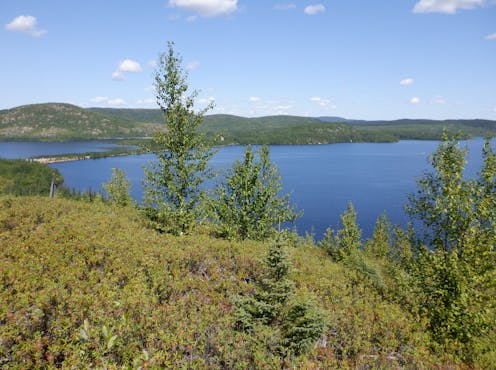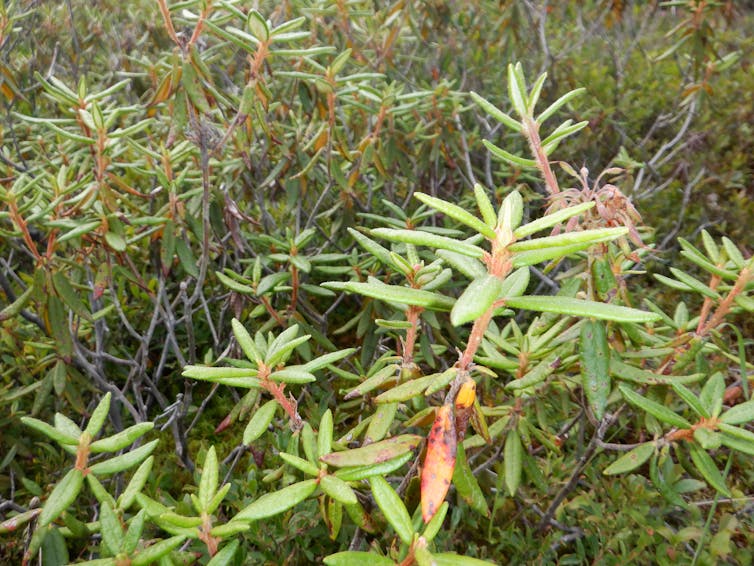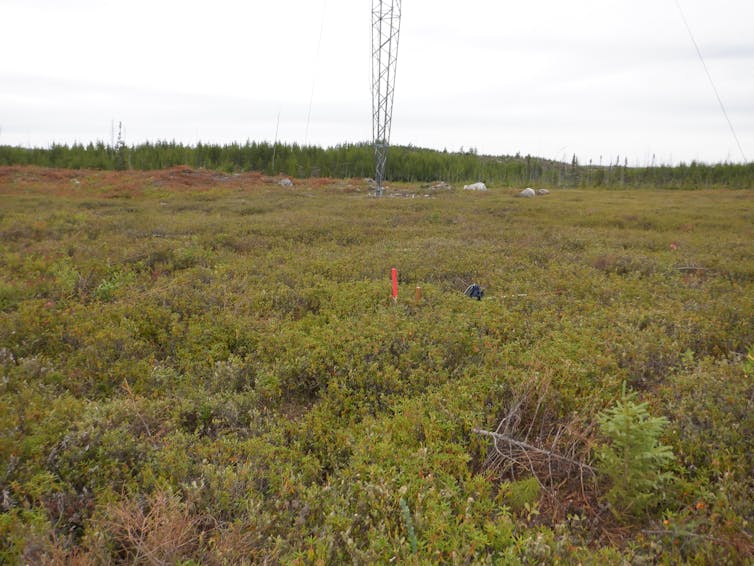
Discussions at the recent COP15 biodiversity conference in Montréal highlighted once again the impact of human activities on wildlife. Many species are forced to migrate, are seeing their populations declining, or worse, are finding themselves on the brink of extinction. For example, the populations of woodland caribou (Rangifer tarandus) are declining as a result of the damage of logging on their habitat.

This article is part of La Conversation Canada’s series The boreal forest: A thousand secrets, a thousand dangers
La Conversation Canada invites you to take a virtual walk in the heart of the boreal forest. In this series, our experts focus on management and sustainable development issues, natural disturbances, the ecology of terrestrial wildlife and aquatic ecosystems, northern agriculture and the cultural and economic importance of the boreal forest for Indigenous peoples. We hope you have a pleasant — and informative — walk through the forest!
However, the consequences of human activities are not always visible. Before being driven into decline, some species are able to adapt to disturbances in their habitat — but only up to a point. This is particularly true of plants, which cannot move to avoid disturbances in their environment, and as a result, are necessarily subjected to the impact of human activities.
Our work in forest ecology at the Université du Québec en Abitibi-Témiscamingue (UQAT) is allowing us to demonstrate the invisible effects of human activities on boreal flora.
Adapting, but not without consequences…
The capacity of plants to adapt is actually a double-edged sword. On the one hand, it makes it possible to put off a decline in their populations due to human activity. On the other hand, it can lead researchers to underestimate the consequences that human activities are having on the environment.
When a species adapts to disturbances in its habitat, its nutritional and medicinal properties may change. This is because plants respond to these disturbances by producing chemical compounds. Some of these compounds can have harmful effects on the health of the humans who consume them. In the boreal forest, this can take the form of toxins in the seeds of ground hemlock and the leaves of sheep laurel.
However, other compounds are sought after for their benefits to human health. For example, antioxidants, which are highly valued in food for their health benefits, have the primary function of protecting plants from sunlight and various pollutants. One example of these is polyphenols, found in some boreal forest berries, such as blueberries and cranberries.
…especially for Indigenous communities
People whose diet consists of wild plants are particularly affected by the changes in chemical composition that take place when plants are adapting to disturbances in their habitat. This is the case for Indigenous communities, who gather dozens of species in their traditional territories for food and medicinal purposes.
To study how the adaptation of plants affects their chemical properties, we conducted a project in partnership with three Indigenous communities in northwestern Québec. Members of the communities suggested that we work on Labrador tea because of its cultural importance and medicinal uses. Labrador tea leaves are used in infusion to treat many ailments, such as osteoarthritis, diabetes or kidney problems. The leaves contain antioxidants called flavonoids in large quantities.

Disturbances have different effects
The members of the communities we met expressed their concerns about the consequences of two human disturbances on their territories: hydroelectric transmission lines and the exploitation of mining sites. The hydroelectric transmission lines create an artificial opening in the forest, which overexposes the plants to the sun. Mining sites generate heavy metal pollution. In both cases, Labrador tea plants adapt by producing flavonoids.

After analyzing the chemical composition of Labrador tea plants sampled from the territories of three Indigenous communities, we found contrasting effects of human disturbances. On the one hand, plants under hydroelectric transmission lines produced more flavonoids to protect themselves from the sun. On the other hand, plants near mining sites produced less flavonoids, due to a degradation of their metabolism by heavy metals.
However, before jumping to the conclusion that plants under hydroelectric transmission lines are healthier, other factors need to be considered. For example, chemicals potentially harmful to human health, such as triclopyr or glyphosate, may be used to maintain hydroelectric transmission lines.
The flavonoid analysis only tells part of the story, so further analysis of factors such as the content of plant pollutants would be needed to gain a full picture of the effects of human disturbance on plant properties.
Biodiversity is important for the functioning of ecosystems, and also for the services it provides to humans. Indigenous peoples have extensive knowledge of plants and their environment, which should be valued.
Human disturbances affect the plants, the benefits they provide and the Indigenous knowledge that depends on them.
Les auteurs ne travaillent pas, ne conseillent pas, ne possèdent pas de parts, ne reçoivent pas de fonds d'une organisation qui pourrait tirer profit de cet article, et n'ont déclaré aucune autre affiliation que leur organisme de recherche.
This article was originally published on The Conversation. Read the original article.







